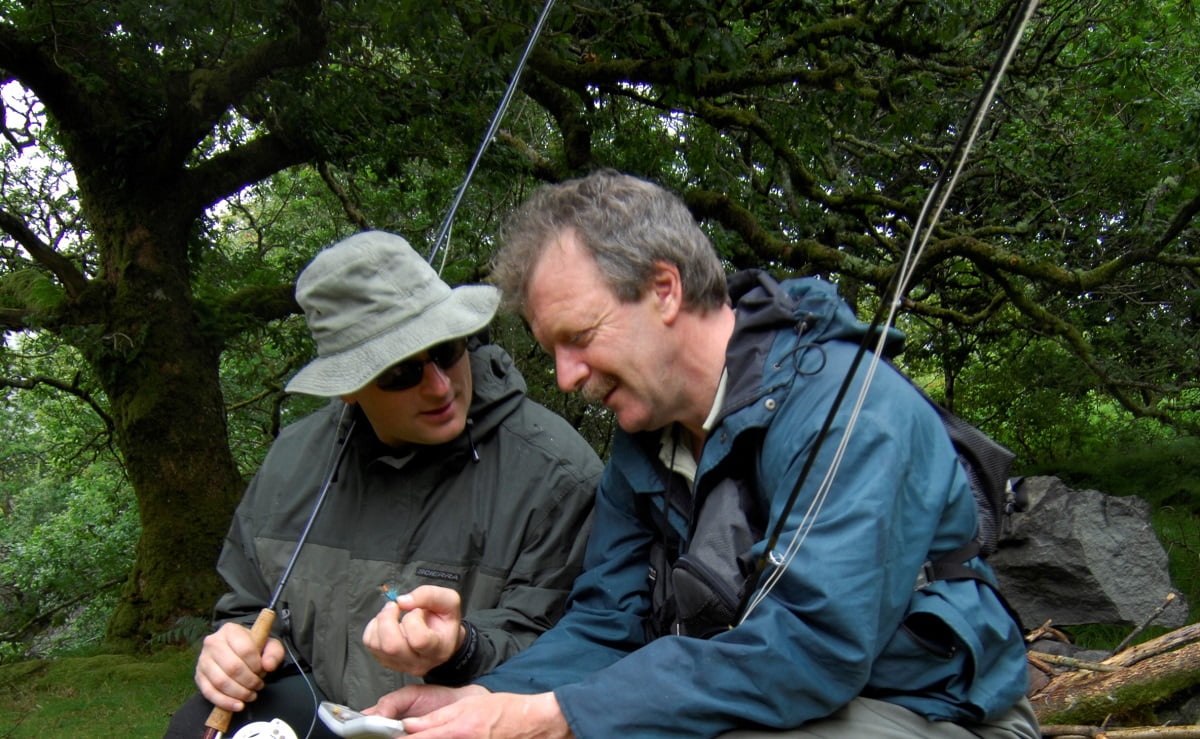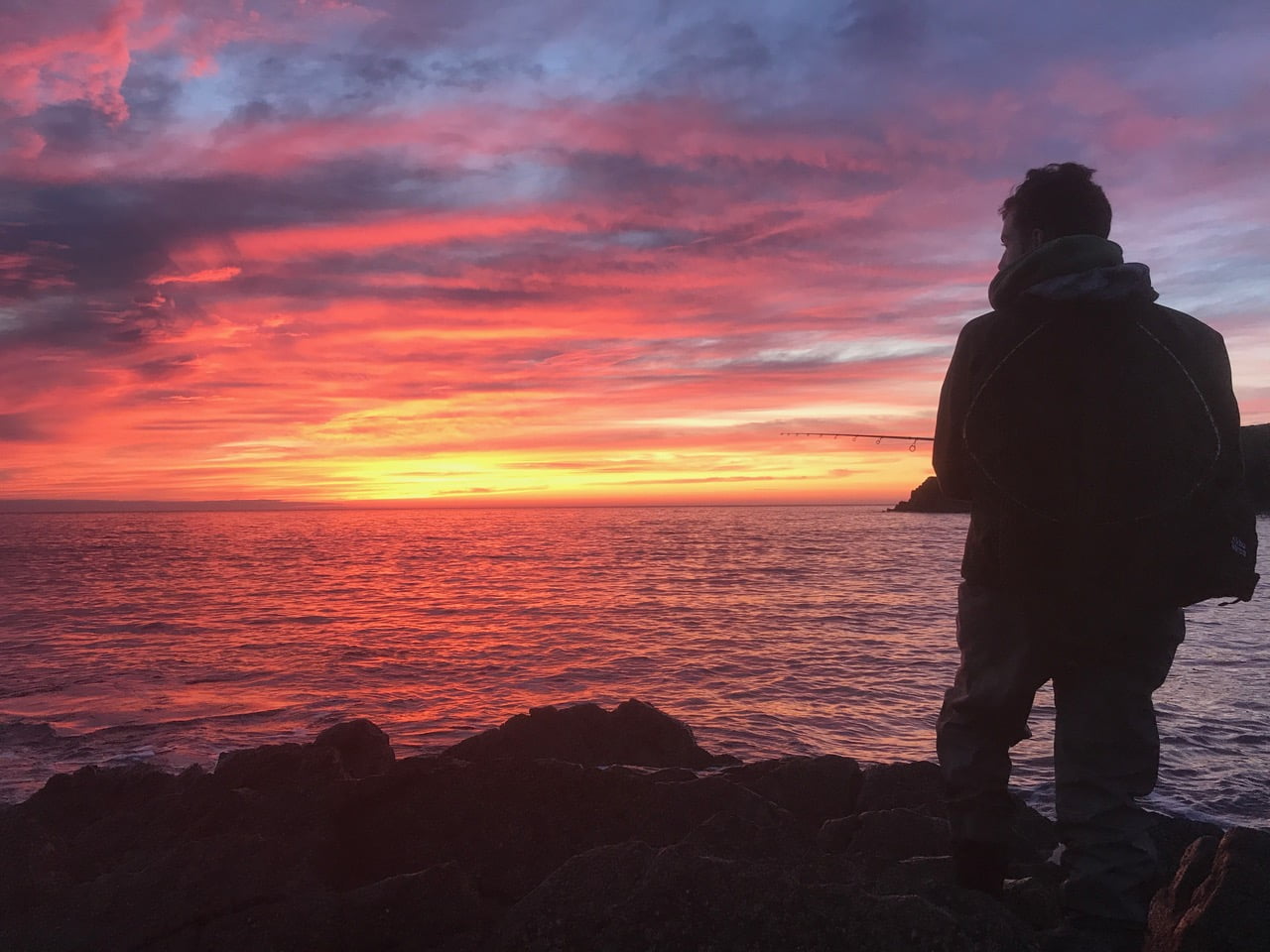Some Old Flies And Not So Old Flies – That Still Work!
A question many fly fishers ask us is what flies should I bring to Wales?
Here angling writer Wynn Davies shares a selection of 50 fly patterns for river and stillwater trout, grayling and sea trout. From classic patterns to modern dressings, each fly listed in this feature will catch fish in Wales.
Fly No 1 – Tup’s Indispensable
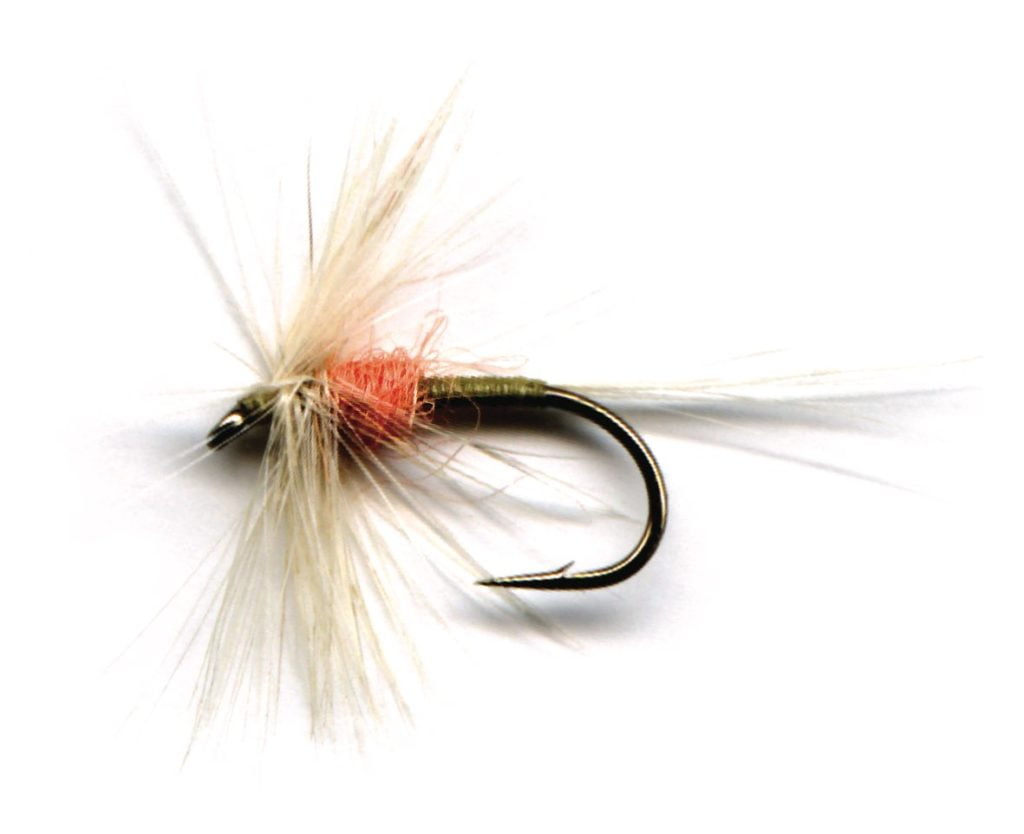
A fly that was invented in the West Country by R. S. Austin, which was added with crimson seal’s fur by Skues. Works for the paler of the up-winged flies.
Fly No 2 – Haul a Gwynt

The name means Sun and Wind in Welsh, and yes it does what it says on the tin. A brilliant fly for a big wave and sunny conditions. Tip for you, tie a short hackle in first then overlay it with a longer hackle, gives it that extra kick in a big wave.
Fly No 3 – Dark Mackerel
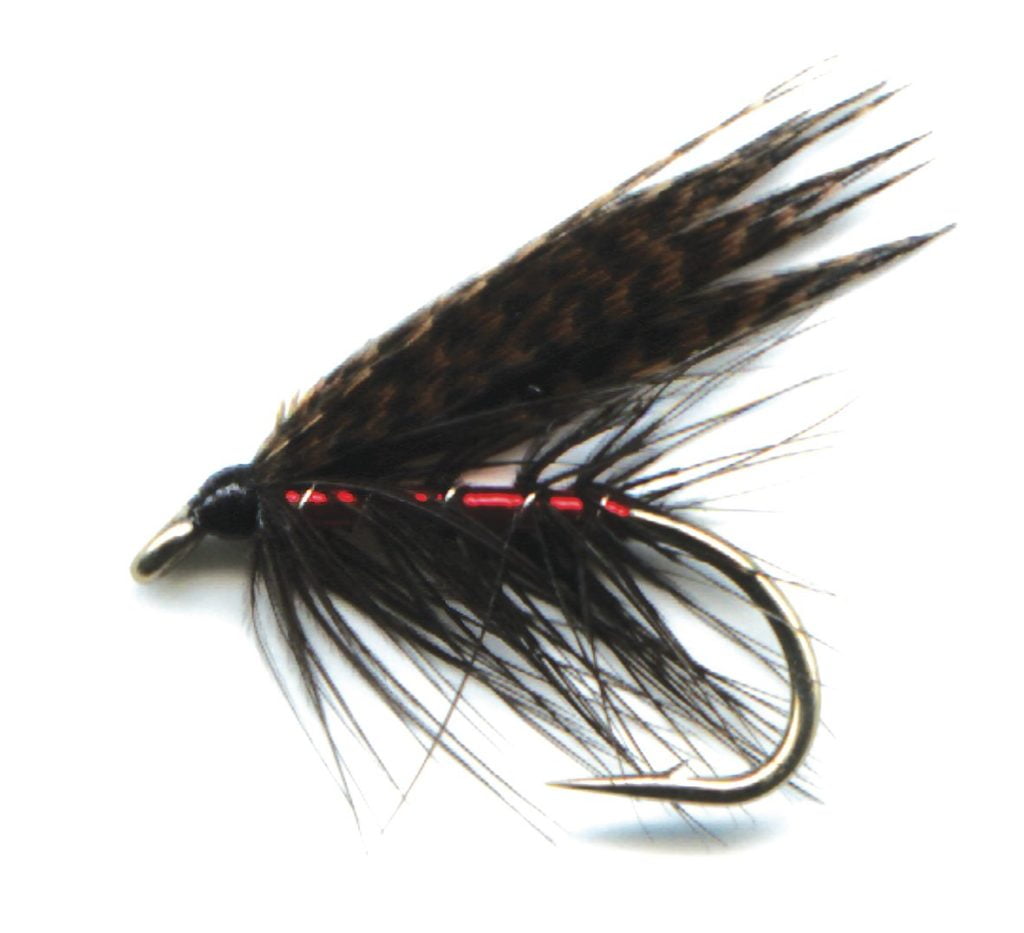
One of my go to favourite flies for sea-trout, in a variety of sizes.
Fly No 4 – Diawl Bach

Little Devil in Welsh. This fly caused havoc on the Irish Loughs when they found out about it. Can be dressed in a multitude of ways, this is one of my favourites.
Fly No 5 – Moc’s Cert
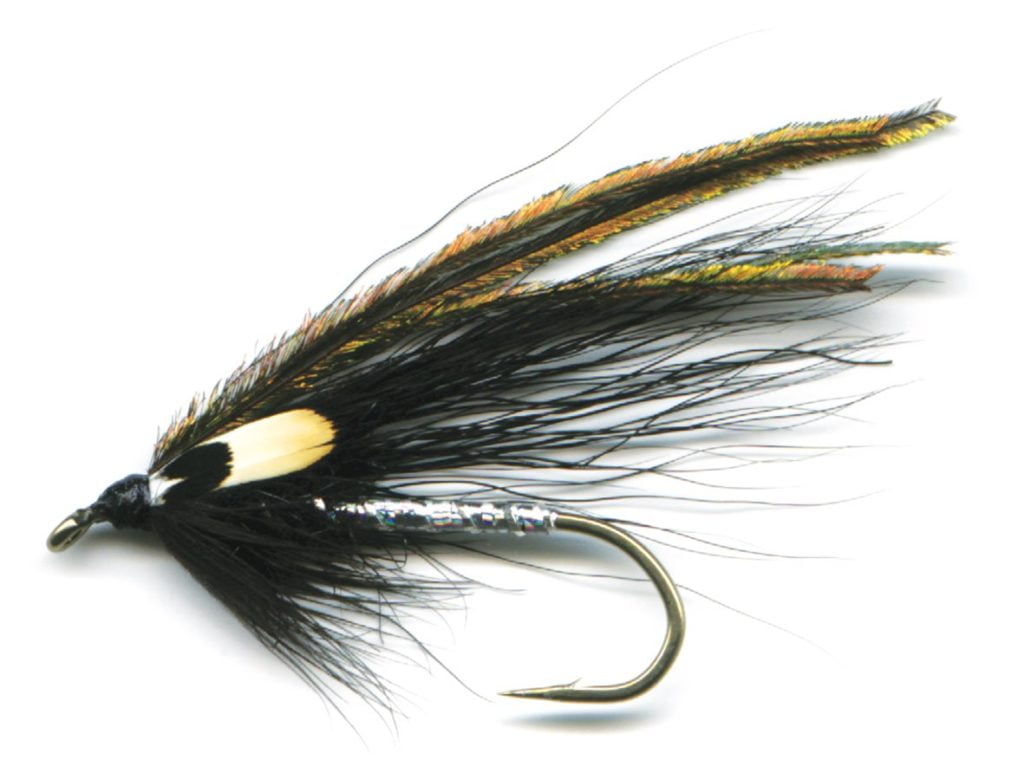
A sea-trout fly invented by the late Moc Morgan, enough said.
Fly No 6 – Woolly Bugger
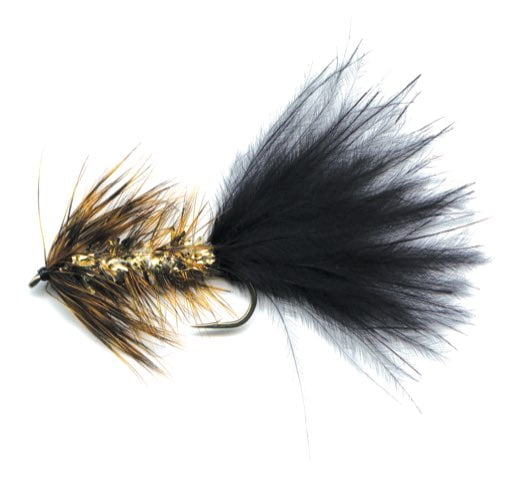
One for you purists out there. A very effective lake and river fly for big fish. On cloudless, sunny hot days try swinging this through the fast streamy water.
Fly No 7 – Hawthorn Fly

This is the first big terrestrial hatch of the season. Smaller males hatch approximately a week before the larger females. They are prone to find themselves on the water in wind or a drop in temperature, the trout take a few days to lock on. The traditional day for the start of the hatch is St Mark’s Day, which is 25th of April.
Fly No 8 – Griffith’s Gnat
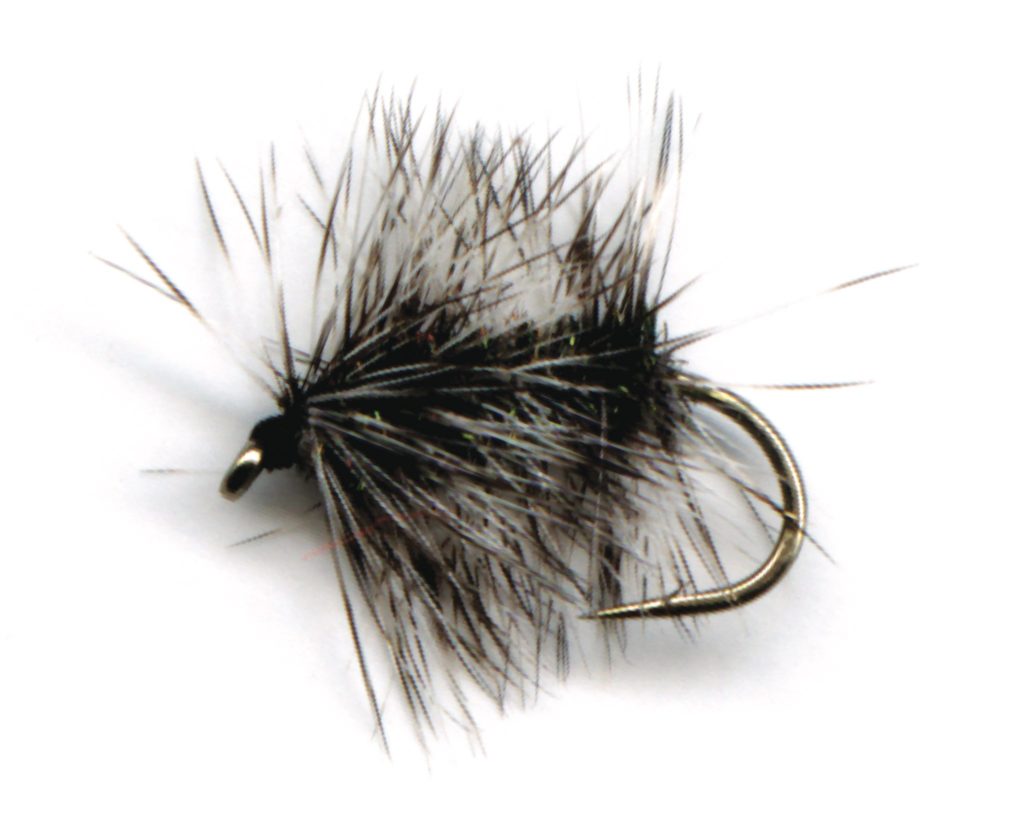
Tied originally to imitate midge emergers/mating chironomid in 18/20, but it works up to size 12 or even 10 as a mayfly or skating sedge. It is the footprint and not the appearance that makes it successful.
Fly No 9 – The Alexandrea

First named the Lady of the Lake, this fly might divide. Tied initially as a pin-fry imitation for the point, but I have found it effective throughout the season, do not over dress, 2/3 peacock swords is enough and add jungle cock. Effective for trout, sea-trout and char.
Fly No 10 – Butcher
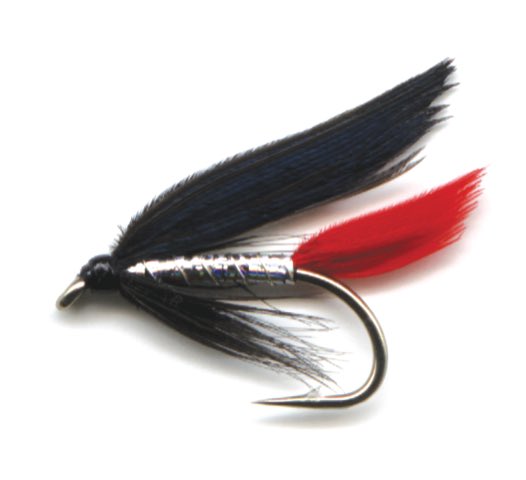
Originally called Moon’s Fly, it was renamed to reflect Mr Moon’s profession, a butcher. At nearly 200 years old it is, together with its variants, the Bloody, Gold and Kingfisher Butchers, very effective flies to have in your box for trout and sea-trout.
Fly No 11 – Bob’s Bits

Whilst this fly was invented by Bob Worts for Grafham Water, I have had great days with it, fishing for wild trout. My favourite tying is red seals fur and that’s it, simple but effective, sizes 16/18. Cast out and leave well alone so it sits in the film.
Fly No 12 – Shipman’s Buzzer

Another fly that was invented for reservoir fishing, this time Rutland and another to be fished in the surface film. You can put floatant on the poly yarn, but that’s it in my opinion. Can be fished in a range of sizes from 12 to 18.
Fly No 13 – Blue Elver
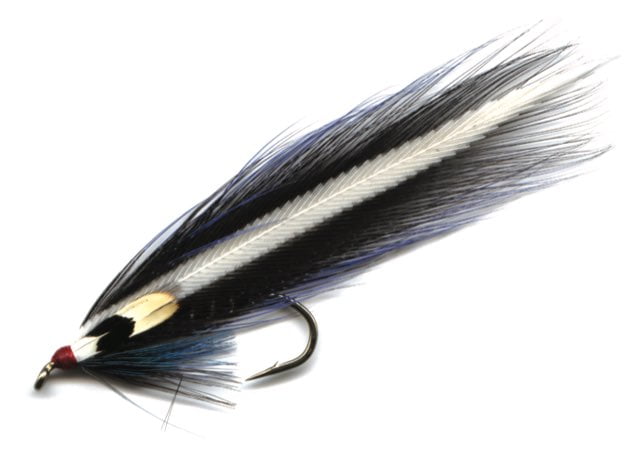
There is a reason why this is 13, I have friends who love this fly, fished in the Summer on a floating line, in streamy water, they find it very successful. Myself, however, have laboured to catch the occasional sea-trout with it, it is also a pain to tye.
Fly No 14 – Dabbler
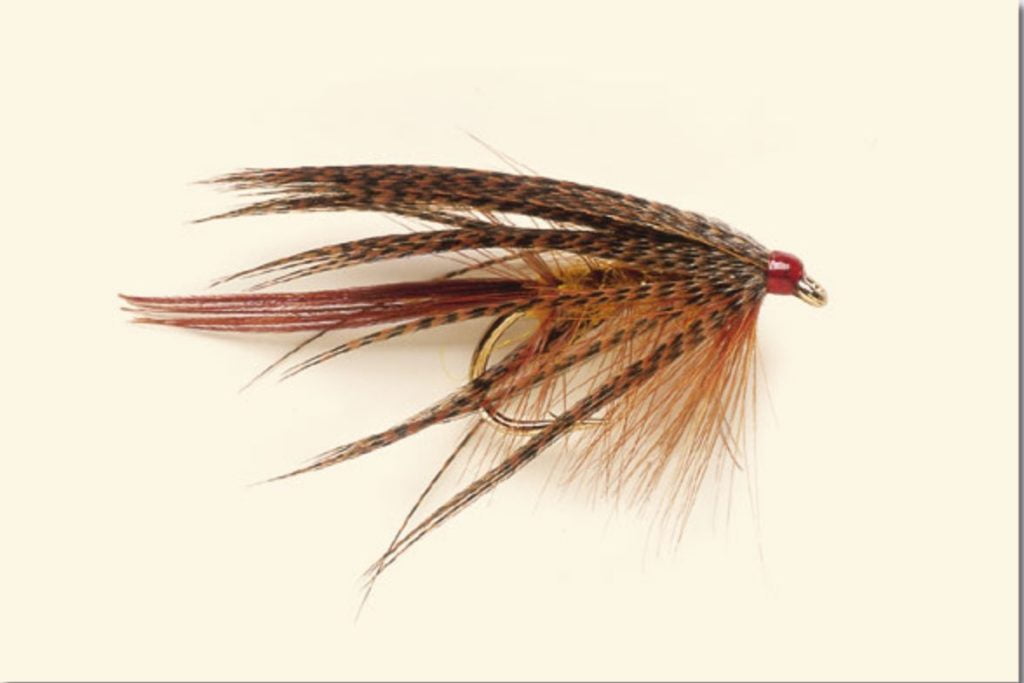
Devised by Donald McLearn of Co Down, this fly has spawned the most variants of any fly I know of, one thing they all have in common is Bronze Mallard. A great fly for a good wave, has a big fish reputation.
Fly No 15 – F Fly
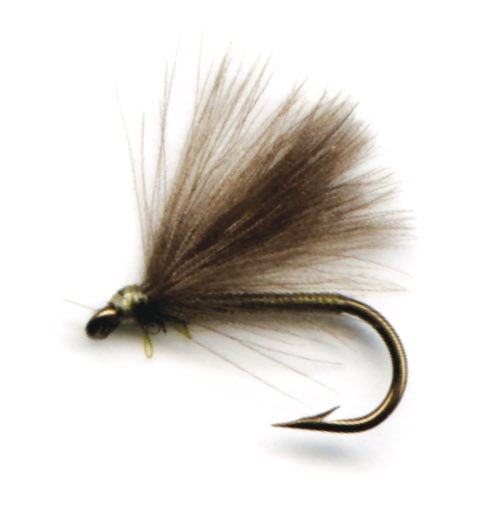
Devised by Marjan Fratnic this fly started a mini-revolution, simple to tie, deadly to fish with, change the body colour to whatever suits the hatch. A great fly.
Fly No 16 – Elk Hair Caddis
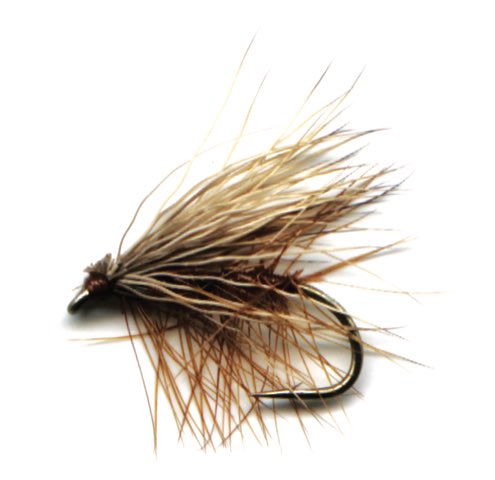
Al Troth invented this pattern in the late 50’s to imitate the adult caddis fly. Can be fished as a general searching pattern and tied in a variety of colours. Some even omit the body hackle.
Fly No 17 – Haslam

Originally tied as a salmon fly but became popular with Welsh sea-trout anglers, especially on the Dyfi.
Fly No 18 – KlinkHammer

Another fly that started a trend. Tied by Hans Van Klinken, I had a the pleasure of Hans’ company for a few days some years ago. Great man, great fly.
Fly No 19 – Zulu
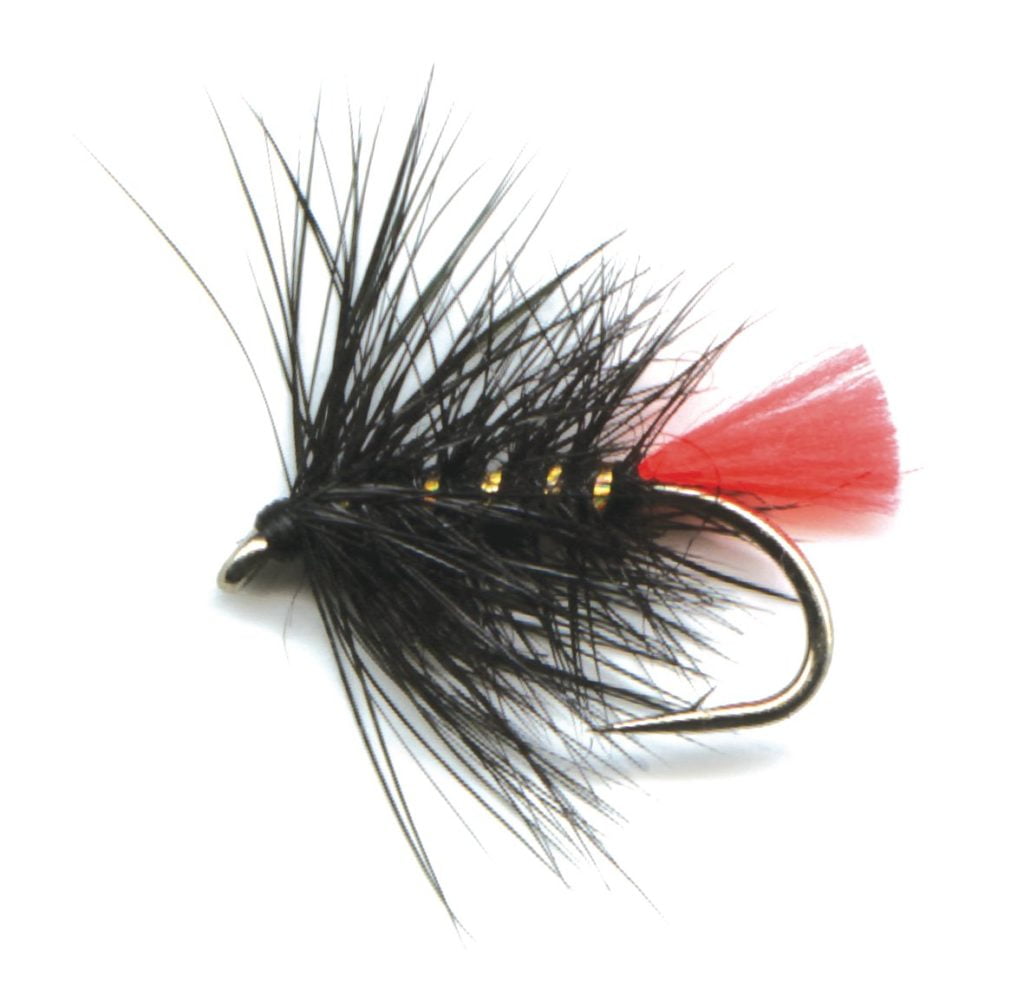
A very old fly, can be dressed heavily for a big wave or sparsely for a buzzer hatch. Good for trout and sea-trout, on rivers and lakes. There is a variation called a Blue Zulu which is also very popular.
Fly No 20 – Bibio

This fly needs no introduction and there are many variants, hoppers, sedgehogs etc. Originally was tied with an orange mid-section. A popular bob fly, but oddly enough I do like it as a point fly.
Fly no 21 – Stoat’s Tail
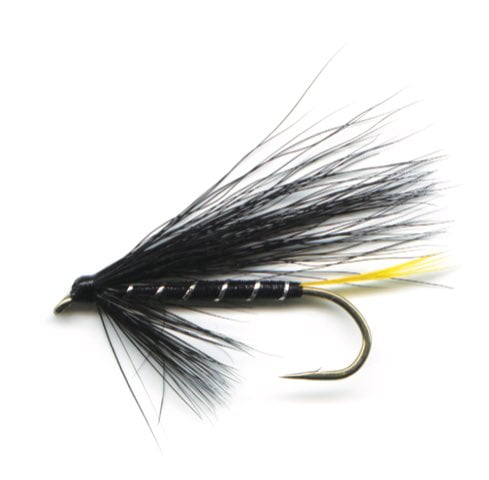
A floating line pattern for summer salmon fishing.
Fly No 22 – Gold Ribbed Hare’s Ear Nymph
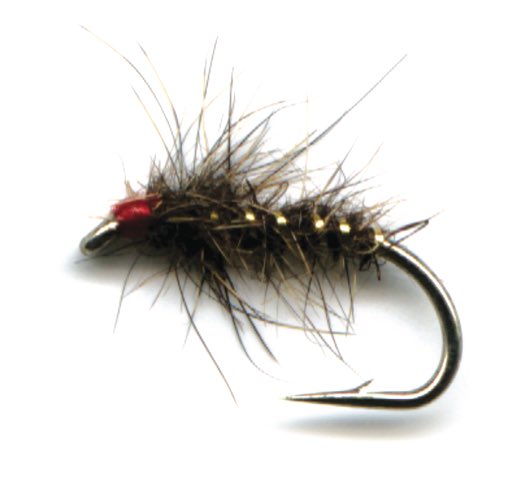
This is another very old fly, still as deadly today as when it was invented, fish it in all waters, even if there is no hatch.
Fly No 23 – Grey Duster
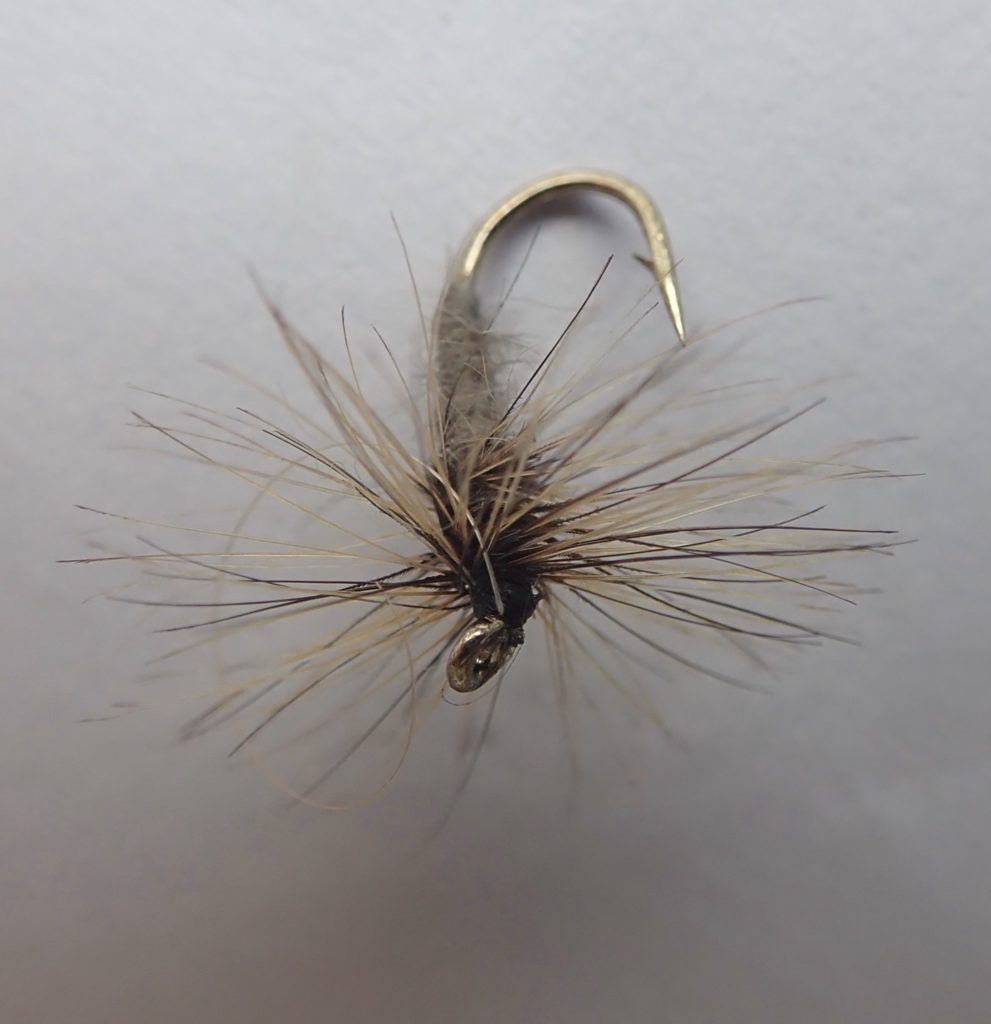
Born on the banks of the Alwen, it has been in my box ever since I started my journey. Has caught trout in a Mayfly hatch on an Irish Lough, caenis feeders and provided me with my most memorable fish on a bright sunny day fishing a flat calm on Tal-y-Llyn.
Fly No 24 – Red Spinner

This fly is a tribute to a barber from the Usk valley, devised by Harry Powell nearly a century ago, represents the female spinner of the March Brown. But can be tied in variety of dressings and is a great all-round spinner imitation.
Fly No 25 – Secret Weapon
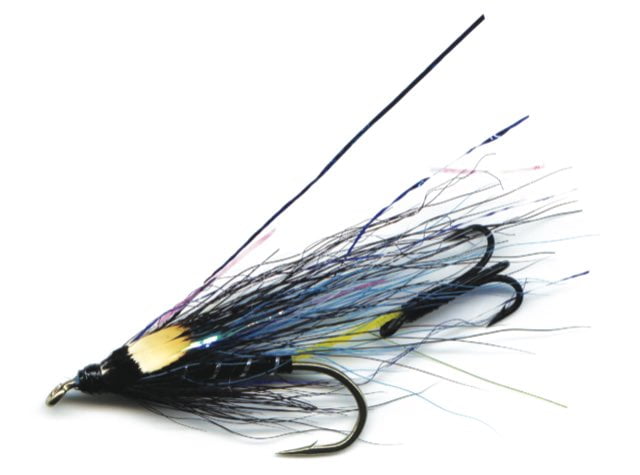
Have hummed and hawed about posting this fly. Sea-trout are notorious at nipping at the tails of flies and this was very effective in the days when I fished for them. Not a fly for catch and release.
Fly No 26 – Hoppers
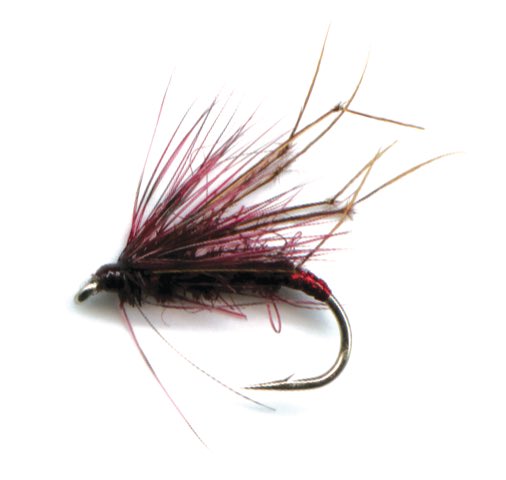
Originally called Bristol Hoppers as they emerged from Chew and Blagdon, this style of tying can be adapted to any fly and they benefit from being pulled through the waves and not left static. This is one of my favourites.
Fly no 27 – Coch Hopper
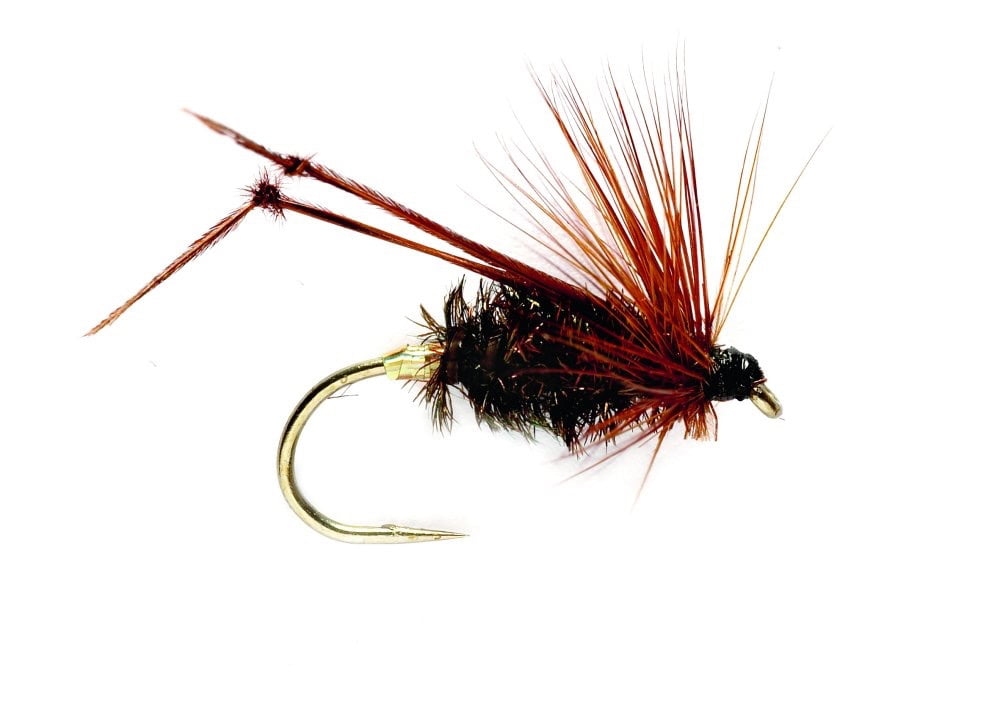
This Emyr Lewis fly is superb, devised for a Coch A Bonddu hatch, it works throughout the season. The beetles only take flight on warm, sunny days, so this hopper you cast out and leave, twitching it occasionally. Shave everything off under the hookshank.
Fly No 28 – Greenwell’s Glory
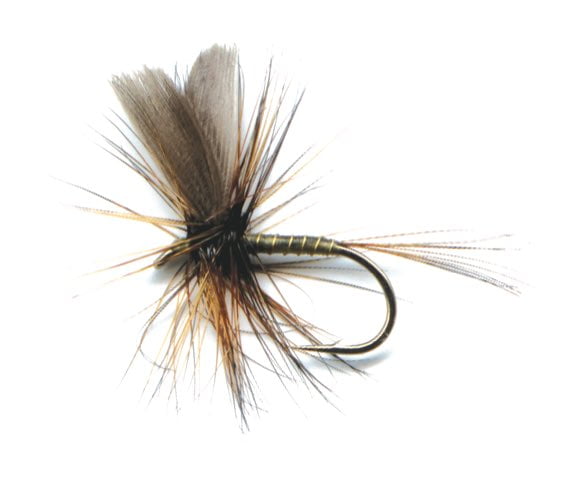
Originally tied as a wet fly by Canon Greenwell and James Wright in 1854. This is the dry version, a very effective fly for various olives and iron blue duns, in sizes from 12 to 18
Fly No 29 – Kite’s Imperial

Legend has it that Oliver Kite tied this fly after seeing some of the flies the locals used on the Teifi. He rarely used any other dry fly afterwards.
Fly No 30 – Grannom

Often the first caddis to appear in any numbers. This fly represents the mated female with its green egg sac. The fly usually appears in April with the hatch lasting no more than two weeks.
Fly No 31 – Red Tag
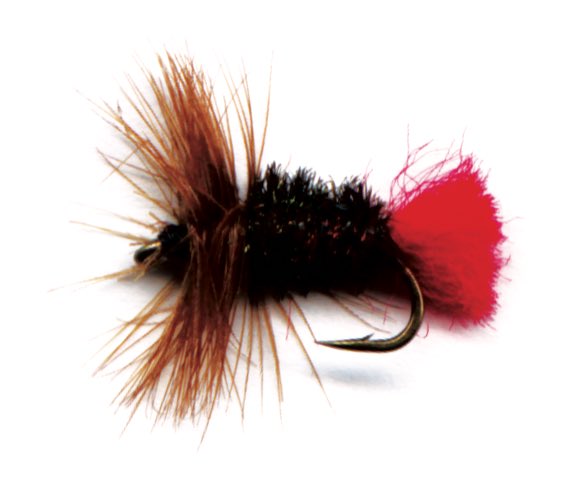
Originally tied by Martin Flynn in the 1850s as a dry-fly for grayling but has since become very popular with trout anglers
Fly No 32 – Green Peter

A classic Irish lough fly, for salmon, sea-trout and trout, in loughs and rivers This was tied by Eāmonn Kennedy for Lough Beltra salmon, he also has a version with golden pheasant breast feather instead of red game. Great ghillie. Great man. Great friend.
Fly No 33 – Pheasant Tail Nymph
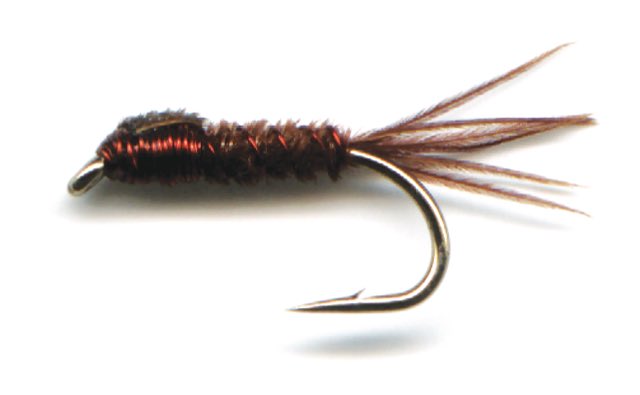
Created by Frank Sawyer, legendary river keeper and prolific writer. Originally tied with two simple ingredients, pheasant tail and fine copper wire. The copper wire acting as thread with added bonus of giving the fly weight.
Fly No 34 – Daddy Longlegs

Highly effective fly, whether you fish it dry, damp, sub-surface or deep on a sinking line. Effective all-year round.
Fly No 35 – Black Gnat
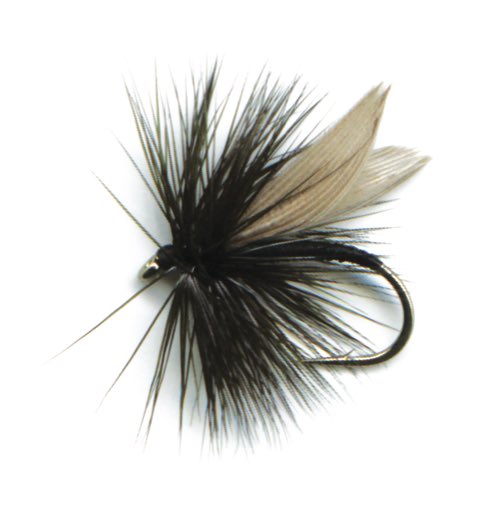
Black Diptera flies are widespread and numerous, this is an essential pattern for your box, it is also a very good search pattern. I like this dry fly in sizes 16 to as small as you can manage to tie it.
Fly No 36 – Blue Charm
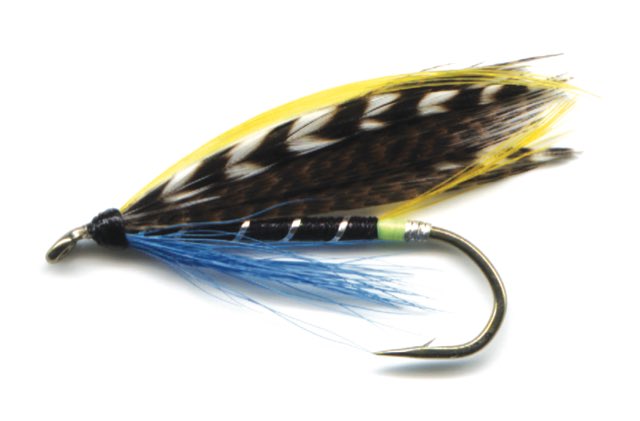
A great salmon fly for summer and low water conditions. Around a 100 years ago a certain Mr Arthur Wood was busy catching 3,500 salmon with this fly on the River Dee in Scotland, I wonder what he would make of fishing now.
Fly No 37 – Grey Wulff
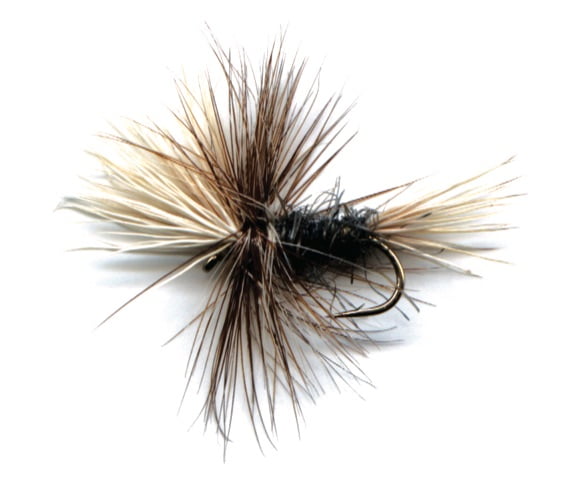
One of a series of flies created by the legendary angler Lee Wuff. It is virtually unsinkable and is a highly visible fly. Fish either as a dry or slightly damp in the surface film.
Fly No 38 – Clan Chief
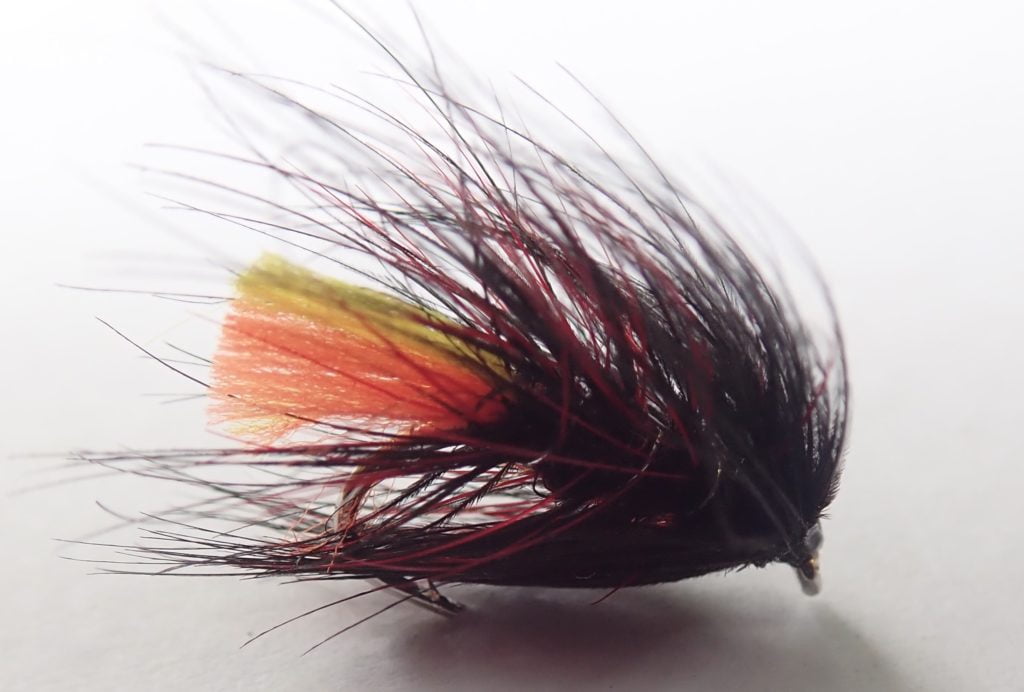
Captain John Kennedy’s invention when he used to run Lochboisdale Hotel and the fishing on South Uist. Very good Loch pattern for trout, sea-trout and salmon. Love flies with two different coloured body hackles wound together.
Fly No 39 – Muddler Minnow
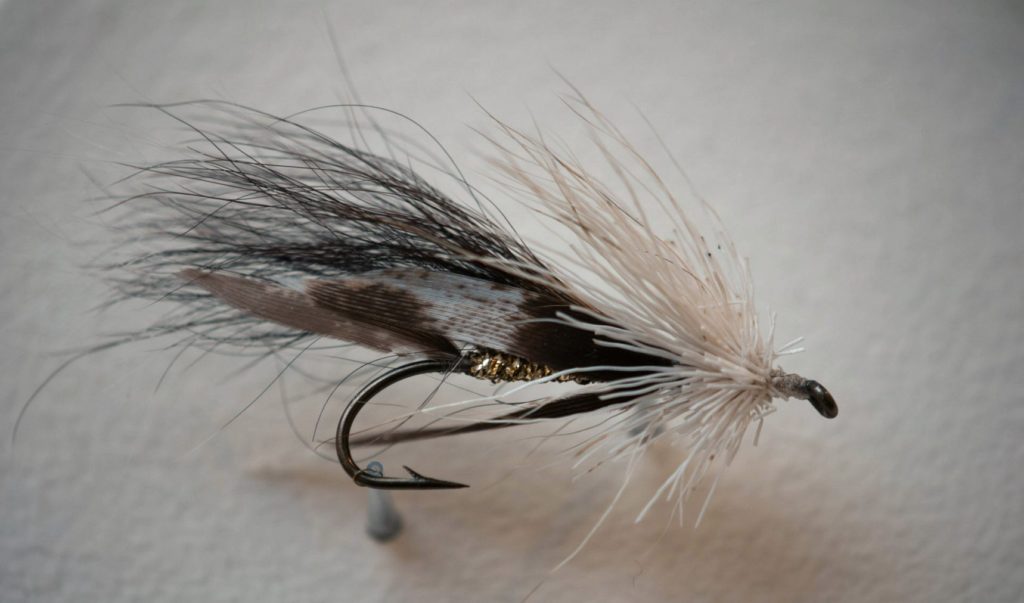
Another fly that started a trend. Tied by Don Gapen in 1936, to imitate sculpin in the Nipigon River Minnesota, The deer head that he tied is now on so many flies that they are referred to as Muddlers. The picture shows one of the originals tied by Don.
Fly No 40 – Grayling Witch
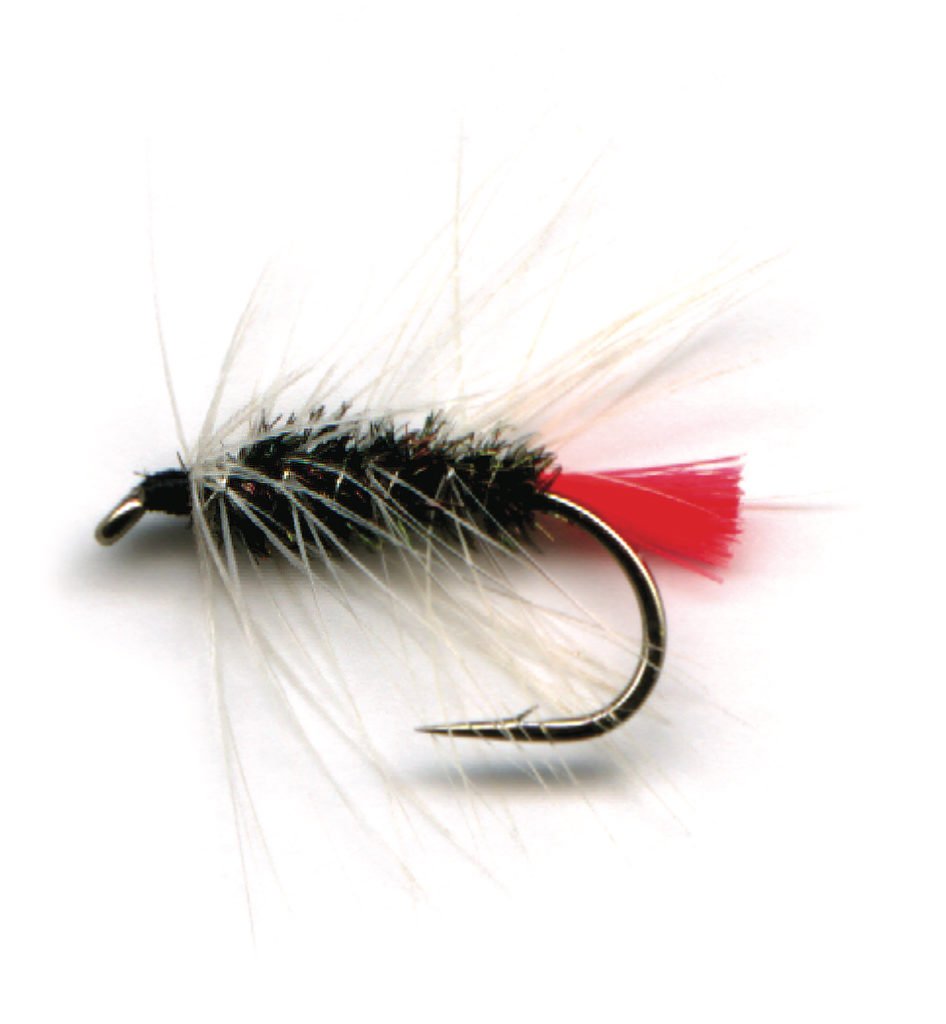
This is a great dry fly for grayling and even the trout like it too. I prefer this variant first tied by Roger Woolley, which has a body hackle instead of the ordinary hackle. Fish in sizes 14 to 18.
Fly No 41 – Iron Blue Dun
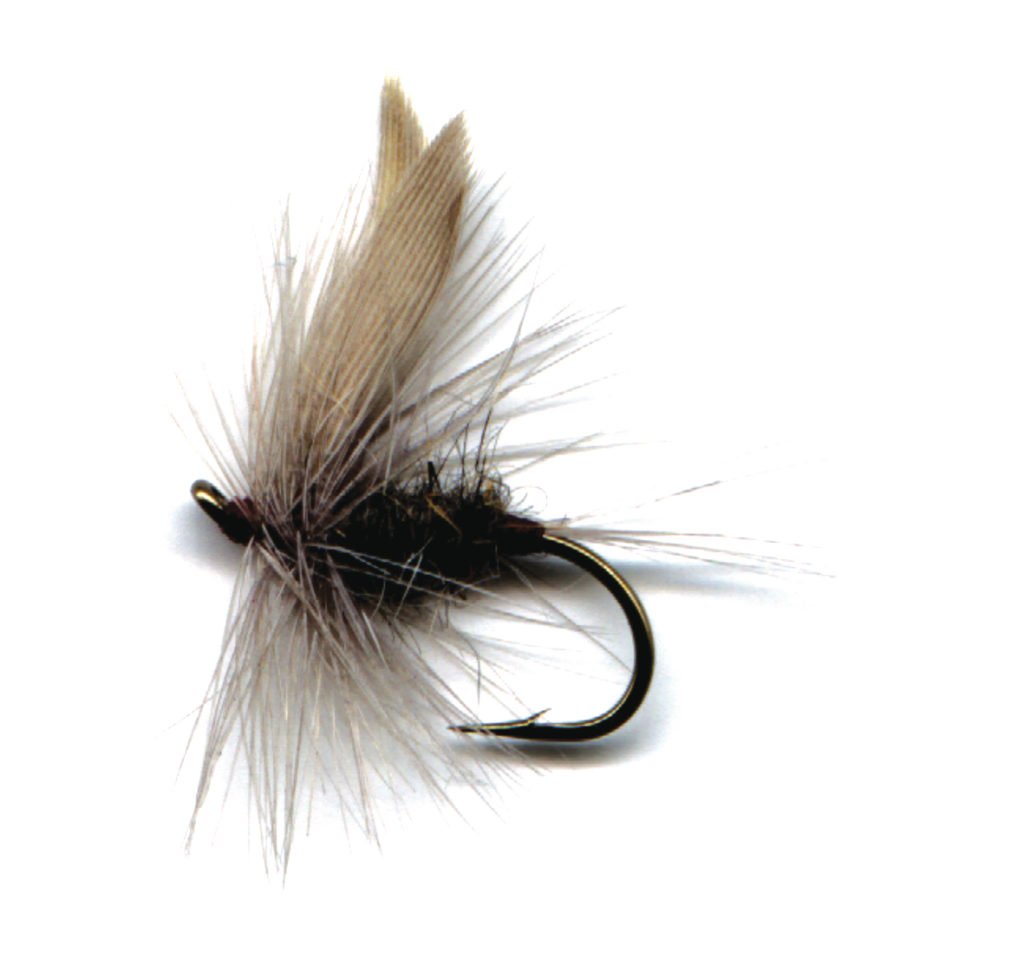
A tiny fly compared with other up-winged flies of springtime, main emergence period is April and May, with a smaller hatch September/October. Often referred to as a bad weather fly, because even on cold wet days the duns hatch and can give good sport.
Fly No 42 – Editor

Tied by the Englishman aka Sandy Leventon. I first came across it in 1990, whilst fishing with him on the Spey, talked with him yesterday and he is unsure when he first tied it. A great fly for salmon and sea-trout and has become a firm favourite with many.
Fly No 43 – G & H Sedge

Devised by John Goddard and Cliff Henry, virtually unsinkable and ideal for fishing into the evening when the sedges start to skate. By varying the size and the underbody, it can be used to imitate a wide variety of sedges.
Fly no 44 – Czech Nymph
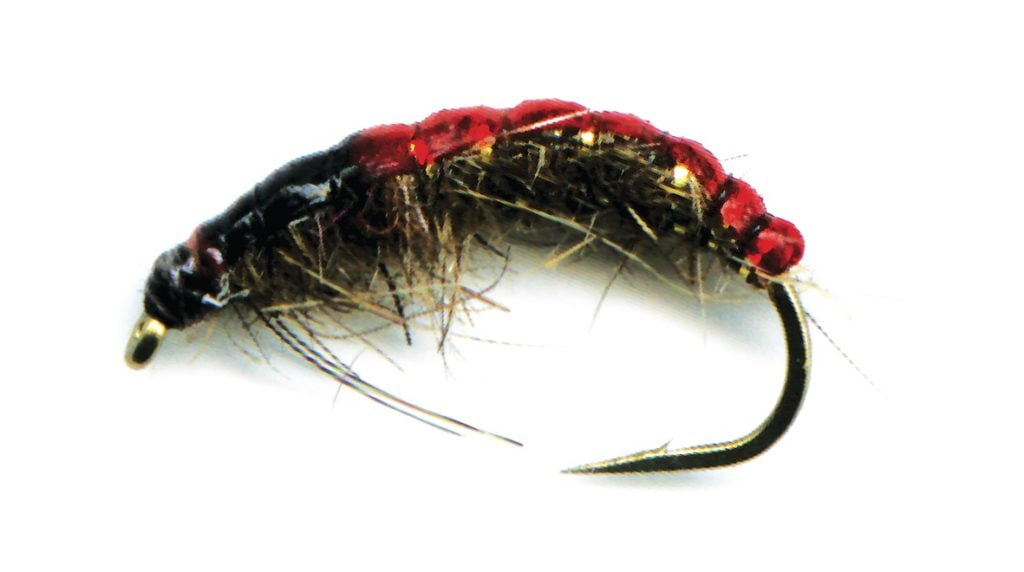
I once watched a Polish angler catch 28 grayling in two hours, he was Czech nymphing with a nymph like this and it was not a great fishing day. I must admit though, it is a technique that has never attracted me.
Fly No 45 – Killer Bug (Variant)

Frank Sawyer devised this fly so he could control the number of grayling on the Avon. The original dressing had Chadwick 477 wool, which is now prohibitively expensive. This is my version and it works.
Fly No 46 – Sparkle Dun
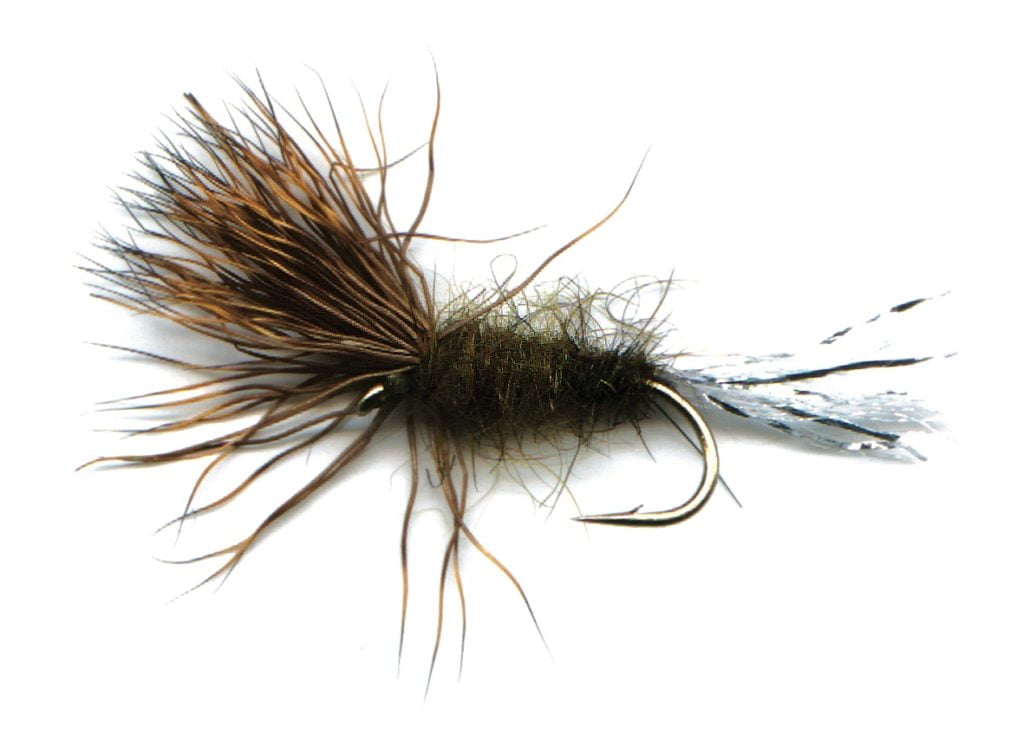
Tied to imitate an emerging mayfly but can be used wherever there is a hatch. A very effective fly.
Fly No 47 – Black and Peacock
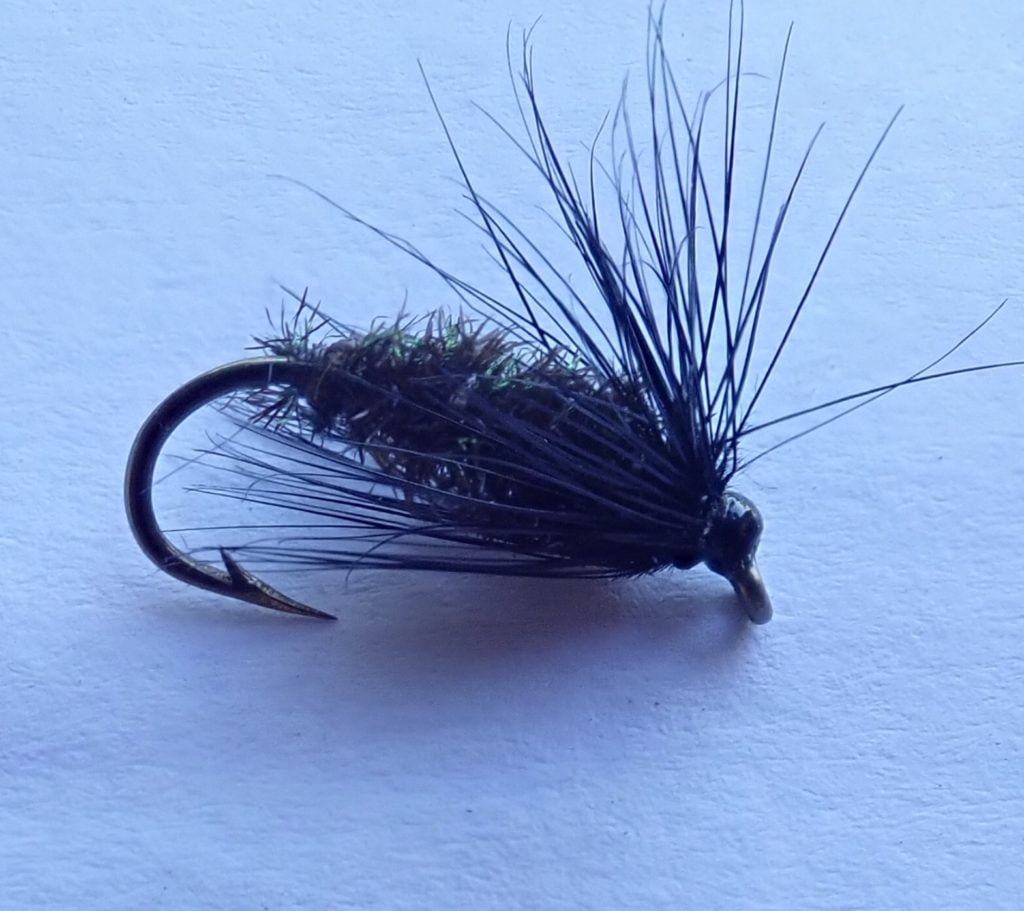
A very old fly, simple to tie yet highly effective, imitates a wide range of a trout’s diet, still one of the best wet flies.
Fly No 48 – Terry’s Terror

The brainchild of professional fly dresser Ernest Lock and surgeon Dr Cecil Terry. Imitates nothing in particular but regarded by many as a reliable olive dun/spinner/sedge imitation.
Fly No 49 – Cock Robin
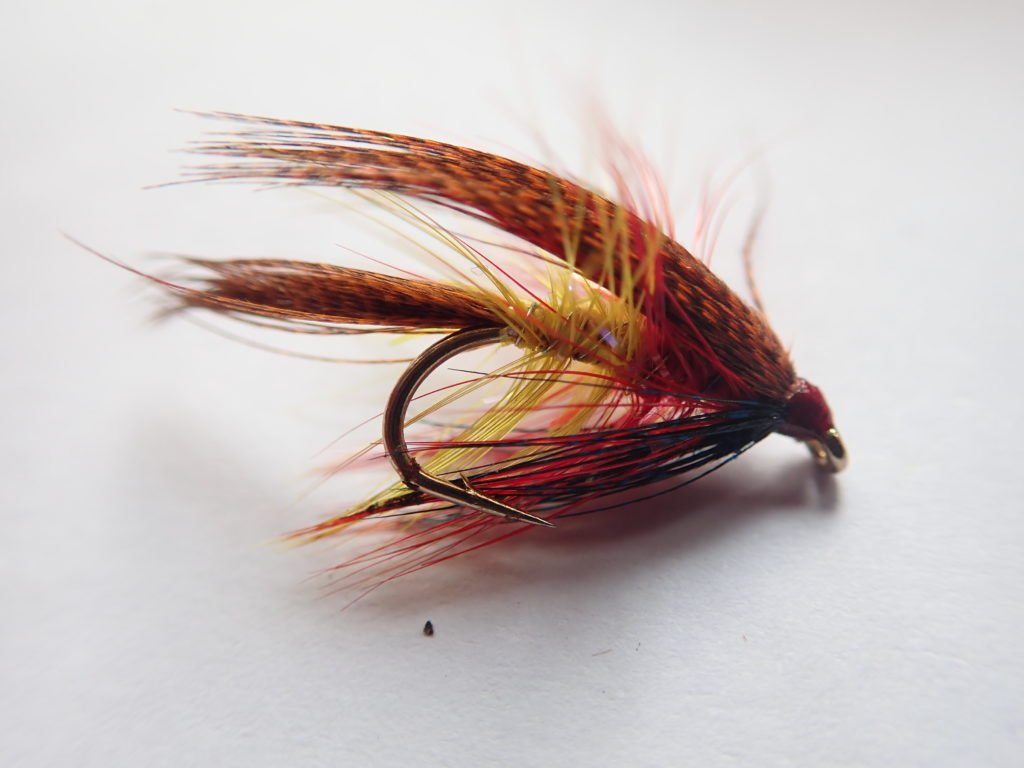
Another of the old traditionals. A very good Irish pattern for Summer and Autumn trout, on both rivers and loughs and a good sea-trout fly.
Fly No 50 – Hare’s Ear and Partridge

Edwyn Lewis tied this fly for the wild lakes of North Wales. It is a top dropper without equal for wild trout. Also works on reservoirs as Andrew, Editor of T&S says ” It is a true all-rounder, and one of my all-time favourites”
Well that is that, Fly No 50 was the last one. Nice to finish on my favourite fly. Time to think about doing some actual fishing now. Tight lines everyone.
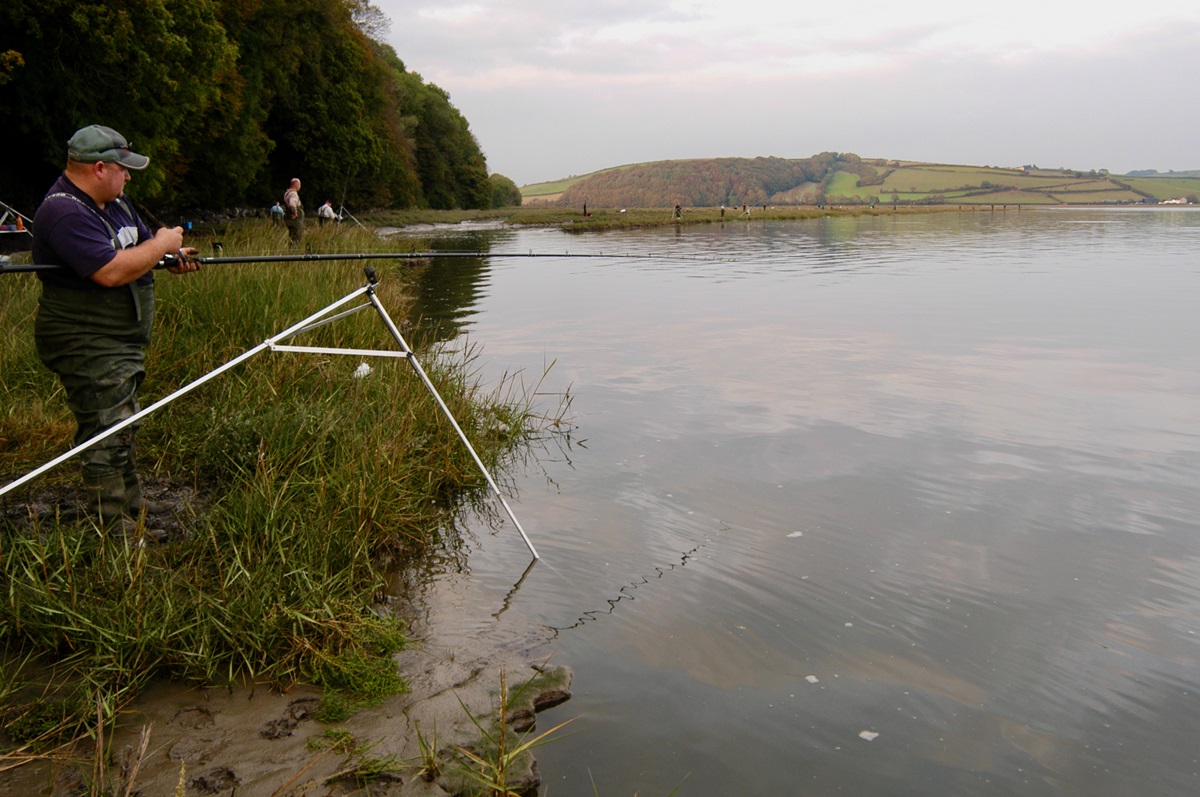
Fire up for Flounders
In this blog Dave Lewis takes a closer look at the humble flounder, a popular fish for sea anglers; found…
Read More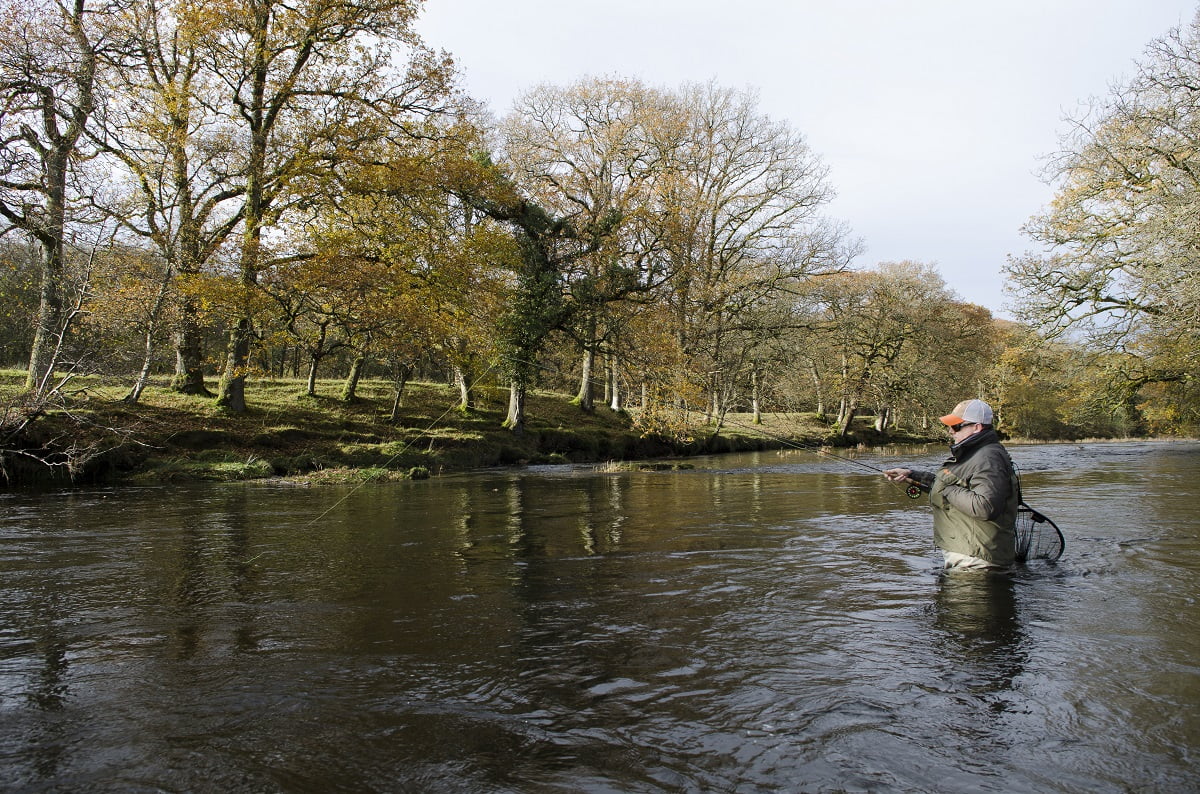
Fishing Prospects for October in Wales
October in Wales marks the true start of autumn, bringing cooler temperatures and a shift in fishing conditions. This time…
Read More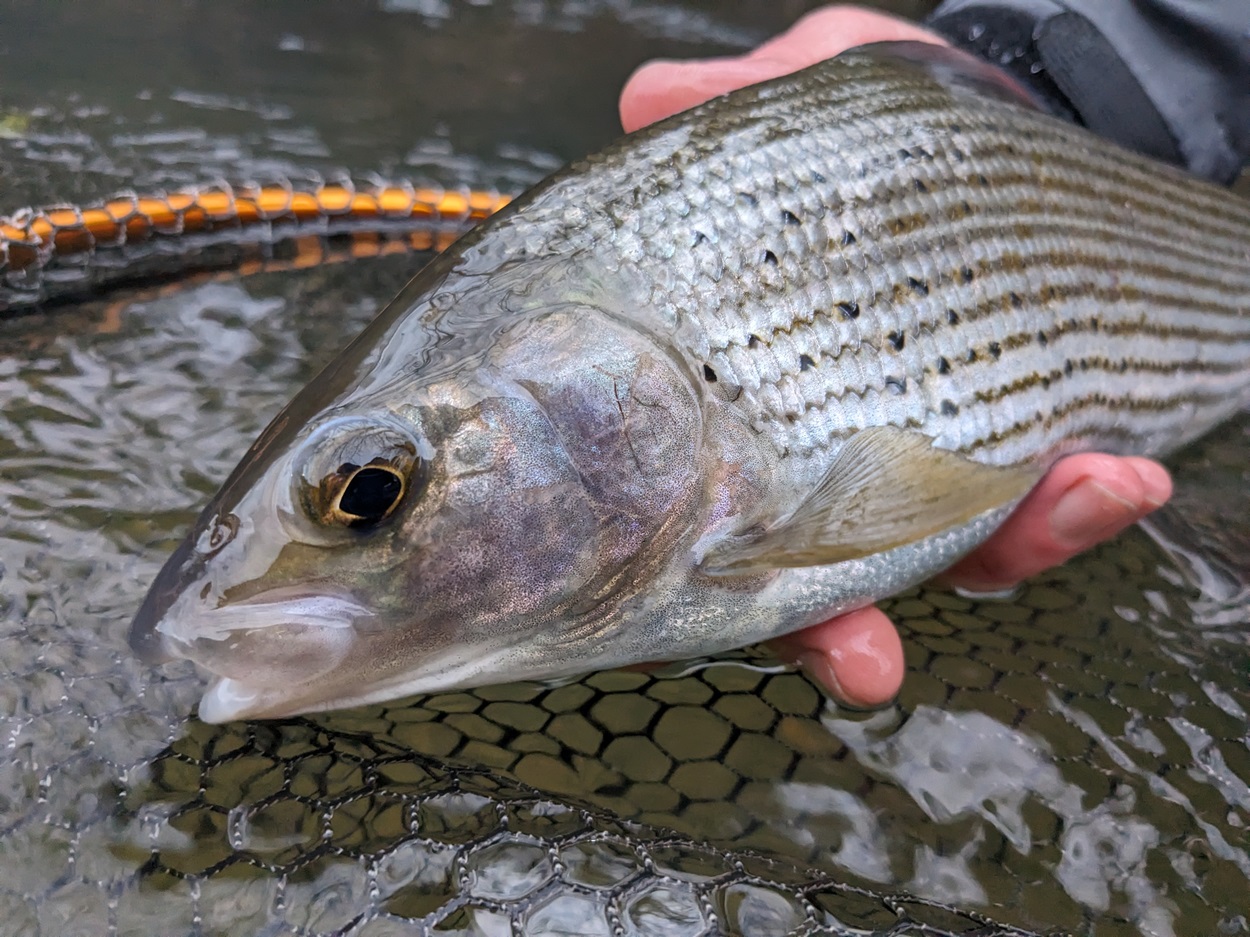
Getting lucky with the ladies
In this blog, Kieron Jenkins of Welsh tackle brand Airflo reports on how to get lucky with the ‘lady…
Read More
